Malta’s Long History Makes the Island a Fascinating Place to Visit
By Kim Harbinson

As our plane swept over the Malta coast following a brief 90-minute flight from Rome, the entire country lay visible below us.
After all, the densely populated main island of Malta is only about 12 miles long and eight miles wide while its more rural neighbor, Gozo, is just one-third the size. The third island in the chain, Camino, is smaller yet and virtually uninhabited.
But a lot is packed into this Liliputian sized country that Winston Churchill once referred to as a “tiny rock of history and romance”! The history begins with archeological digs that predate Egypt’s pyramids by 1000 years. Next are the legendary seaside cliffs where, according to folklore, Homer’s Odysseus met the siren Calypso.
St Paul Shipwrecked

Then there is the rocky islet where, hundreds of years later, St Paul was reputedly shipwrecked while on his way to martyrdom in Rome.
Next comes the ancient walled city of Mdina perched on Malta’s highest point that derives its name and much of its appearance from the period of the Arab conquests.
Finally, there are the numerous churches, fortresses, and palaces left behind by the seafaring Knights of Malta who ruled these islands for over 250 glittering and eventful years.
And, not least, there are many reminders of the days of the British Empire and the World War II siege that Maltese endured.
All this, combined with sprawling beaches, easy transportation on the country’s quixotic bus system and inexpensive living made Malta irresistible for a pair of dedicated independent travelers like my wife and me. The eight days we spent exploring under the warm October sun exceeded even our high expectations.
Sliema–Settling In
The fortified old capital city of Valletta is on a peninsula. On one side is the magnificent Grand Harbor with the historic ‘Three Cities’ and their large shipyards on the opposite shore. This is where the Knights of Malta settled after Charles V granted them these islands in the early 1500s.
On the other side of the Valletta, the peninsula is Marsamxett Harbor with the city of Sliema on the opposite shore. Together these form the finest natural harbor in the Mediterranean, which goes a long way toward explaining why Malta has occupied such an important place in history.
We stayed in one of the many small apartments/hotels along the busy Sliema waterfront that is lined with small shops, outdoor cafes and a long promenade. We had what was grandly called a penthouse in the Pebbles apartment/hotel; it consisted of a less than the grand bedroom, bath and kitchen.
Our modest abode was more than offset by an enormous 20 by 20 rooftop deck that provided us spectacular views of the harbor and Valletta as we lazed over morning breakfast or sipped a glass of surprisingly good Maltese wine in the evening.
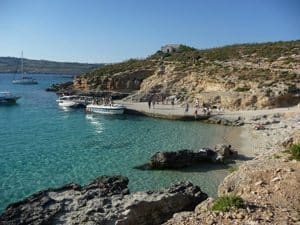
Virtually at our front door, we had the docks for Malta’s many sightseeing boats and the Sliema terminal where we could hop a bus to any point on the island for a mere 90 cents. We agreed that the $424 we were paying for eight nights was a considerable bargain.
Sliema Bustling
Sliema is a bustling community closest to Valletta with a range of accommodations; Valletta itself is limited in this regard. As you proceed along the northeast coast beyond Sliema, towns like St Julien’s, St Andrew’s and St Paul perhaps have more upscale accommodations and less commercial hustle and bustle. To our mind, however, Sliema is the place to be for setting, convenience, and reasonable prices.
Valletta—“A city built by gentlemen for gentlemen”
The ferry ride from Sliema to Valletta took us about 15 minutes. Once ashore, we walked along the city wall to Valletta’s most famous landmark—Fort St. Elmo (open weekends only). It was here that the Knights of Malta stymied the Ottoman Turks of Suliman the Magnificent in the famous siege of 1565 that essentially ended Ottoman efforts to conquer Western Europe.
Two Sundays a month the old fort comes alive with a reenactment of those bygone years.
We joined the crowd gathered around the fort’s Piazza del Armeé to enjoy the pageantry of colorfully clad knights preparing for the next Ottoman invasion under the watchful eye of the Grand Master.
Afterward, we toured the fort’s limestone battlements where the only sign of imminent invasion was a cruise ship steaming slowly into the Grand Harbor to disgorge an invading army of tourists.

Also in St Elmo is a museum (open daily) devoted to a much more recent siege—World War II. Because Malta sat astride German/Italian supply lines to Africa, it was what the Italian navy later acknowledged as “the rock on which their hopes in the Mediterranean foundered”.
The museum contains graphic pictures and mementos of this second Siege of Malta, including a battered old airplane named “Charity”. It, along with two other planes the Maltese fondly named “Faith” and “Hope”, constituted Malta’s entire air force at the beginning of the war.
Part of local folklore is the story that when the Maltese heard the distressing news that one of these three had been shot down in early combat they concluded it must have been “Charity” since they still had “Hope” and “Faith”. Emblematic of this sort of courage, the item of which the Maltese are most proud is the rarely bestowed George Cross the islands received for gallantry. Accompanying it is a hand-written note from George VI expressing his personal gratitude.
At the time of the Ottoman siege, only Fort St Elmo existed on the peninsula. After the Turkish defeat, the Pope sent the famous Vatican architect Francesco Laparelli to build an entire fortified city to cover the whole peninsula. Thus, Valletta became not only Malta’s capital but one of the strongest fortifications in all Europe; it appropriately took the name of Jean Parisot de la Valette who had led the Knights during the Great Siege.
A Planned City
It is the Renaissance version of a “planned city” with straight streets, gracious old buildings featuring Malta’s trademark glassed-in balconies and tree-shaded plazas. From the beginning it was dubbed “a city built by gentlemen for gentlemen”, a claim the Maltese still like to make.
Happily, it is also a city for walkers where few cars are to be found. All the city’s sights can be seen using shoe leather or one of the many horse-drawn carriages that ply the city streets.
And there is no shortage of things to see. The slide show titled “The Malta Experience” (shown hourly every day) provides an outstanding overview of Malta’s history and is a must for the visitor to see. Across the street, the Sacra Infirmeria,(open daily) is the magnificent hospital the Knights built in 1574 that has been described as having one of the “grandest interiors in the world”.
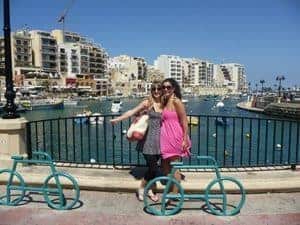
It now combines the convention center with a museum devoted to the Knights’ medical heritage; before gaining their reputation as warriors, they swore an oath of poverty and celibacy and went off to Jerusalem with the title Knights Hospitaller to minister to the Crusaders.
Not surprisingly, knightly vows of poverty, and presumably celibacy, were soon forgotten as Valletta became increasingly wealthy and cosmopolitan.
Indeed, these virtues were so thoroughly forgotten that by the time Napoleon came to these shores in 1798, the population was only too happy to have him overthrow the Knight’s corrupt and antiquated regime.
Alas, their happiness was short-lived. It lasted only until Napoleon started looting everything of value he could lay his hands on to ship back to Paris. Unhappily for everyone, most of these treasures were permanently lost when Lord Nelson sank the French fleet before it ever got to France.
Looting notwithstanding, the Knights of Malta, have left their lasting mark on Valletta starting with the Palace on the Piazza San Gorg (open weekday mornings) where the Grand Masters and, later, the British Governors held court.
Today it is the home of Malta’s President and the seat of the country’s Parliament. It is dominated by remembrances of the Knights like the Hall of Armor, friezes of battles with the Turkish fleet and paintings of the Great Siege painted as seen as an eyewitness to this historic time.
Paying Tribute to Dead Knights
Nearby is St John’s Co-Cathedral. As if to remind the visitor of Malta’s violent past, two cannons sit on either side of the front door. Inside, virtually every square foot of floor pays tribute to dead knights while the chapels ringing nave are dedicated to the eight “Langues” (ethnic groups) that made up the Knights of Malta. The ceiling depicts scenes from the life of St John.

Sir Walter Scott described this overall effect as being the most striking interior he had ever seen. The attached church museum contains Malta’s best-known treasure—“The Beheading of St John the Baptist” by Caravaggio.
This foul-tempered young genius had found temporary refuge in Malta after fleeing prosecution for a murder he committed as a result of an argument over a tennis match; soon, however, he antagonized his hosts and was sent elsewhere.
Every bit as impressive as Caravaggio’s painting are monumental tapestries by DeVos depicting the cartoons of Rubens and Poussin.
After a day of sightseeing, my wife and I would invariably gravitate to Valletta’s Upper Barracca Gardens to sit under its arches and gaze over the Grand Harbor to the “Three Cities” on the opposite shore. Quite simply, these gardens offer one of the finest vistas to be found anywhere.
Marsaxlokk—vintage Malta
Following the reenactment at Fort St Elmo, my wife and I boarded a bus at Valletta’s city gate for our 90cent ride to a fishing village with the tongue-tying name of Marsaxlokk. Almost any store in Malta attracting tourists has posters and postcards celebrating the hodge-podge of antiques that makes up the country’s bus system.
It appears to be a matter of quirky national pride to have such a motley assortment of vintage vehicles still lurching over Malta’s rutted roads. It made our trip to Marsaxlokk a stimulating experience.
The Real Malta: Marsaxlokk
Marsaxlokk had been described to us as the “real Malta”, a place where time stands still. So it was. Looking onto the harbor crowded with the distinctive and brightly colored Maltese fishing boats, Kay commented that this was “the sort of place where painters come to paint and writers to write”. The only intrusion into this other-worldly serenity was a singularly ugly power plant at the far end of the harbor.

Marsaxlokk harbor is the most unlikely place to have been the site of major historical events. It was here, however, that the Ottomans came ashore to begin the Great Siege. More than 200 years later the Napoleon arrived to overthrow the Knights of Malta. Then, this is where the Italian navy dropped anchor when Italy sued for peace in World War II.
And it was in this harbor that President Bush met Michael Gorbachev in 1989 to mark the end of the Cold War. Our waiter at the Il-Bukkett Restaurant, where we enjoyed fresh seafood, speculated that agreement between the two world leaders was perhaps hastened by a fortuitous storm that came up and caused their meeting to be dubbed the “seasick summit”. While enjoying our meal, my wife and I conjured up images of the leaders of the two super-powers settling resolving the world’s problems with ‘barf bags’ by their side.
Market Day in Marsaxlokk
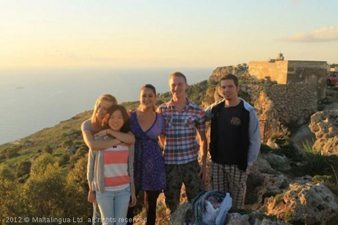
But Sunday is market day in Marsaxlokk, and invasions and summits are considered secondary matters. The entire length of the village waterfront was lined with bright, umbrella-covered stalls where everything from swordfish to play swords for kids were for sale.
Mixed in were outdoor restaurants featuring local catches of fish like pilot fish, bream that make Malta such a seafood lover’s paradise. We strolled for a long time before venturing back onto our bus—it appeared to be circa 1970.
To grasp just how long people have lived in Malta, we stopped on the road between Valletta and Marsaxlokk at the ruins of Tarxien Temple (open daily until 2). They date from between 3100-2500BC but were only unearthed in 1914.
Amazingly complex and well preserved, the temple has numerous rooms, alcoves, and underground grottos where neolithic drawings of sacrificial animals are still visible. An enjoyable hour can be spent wandering through the site and reading the informative signs explaining this long-lost civilization.
Mdina—The Silent City of Malta
The Knights of Malta who settled around Valletta 500 years ago are still considered newcomers by families who have traditionally lived in Mdina; one house, for example, has been in the same family since 1350. This old fortress city was Malta’s original capital and the Arab stronghold for more than 200 years that they occupied the island. The very name “Mdina” is Arabic for “walled city”.
Driving there in our trusty red bus, the shimmering limestone battlements towered over by the baroque St Paul’s Cathedral were almost mirage-like.
We were dropped off at Mdina’s gate since the city lanes that wind among the centuries-old houses are far too narrow for a bus or any other vehicle. Mdina is widely considered to be one of the world’s finest examples of an inhabited walled city. It is also the world’s smallest city; its population of a mere 300 plus people has earned Mdina the title of the “silent city”.
We started our visit by seeing the “Mdina Experience” (daily except Sunday) followed by a stop at the cathedral where scenes from St Paul’s life are depicted. Legend has it that the cathedral is built on the site of the home belonging to Publius, Malta’s Roman governor, who welcomed St Paul to the island in 60AD following his shipwreck. (The biblical story is found in Acts XXVIII)
The place we ended our visit to Mdina was a small café named the Fontanella Tea Room. Here we sat under an umbrella atop the city wall while enjoying an afternoon refreshment and a panoramic view of the whole island in the direction of Valletta and St Paul’s Bay where the saint first came ashore.
The immediate foreground is dominated by the giant Mosta Dome; after St Peter’s in Rome and St Sophia in Constantinople its supporters claim that Mosta has the third largest unsupported dome in the world. It is well worth a visit. Mosta’s claim, it must be added, is vigorously disputed by the proponents of the Xewkija Dome on Gozo who likewise assert ownership of the third largest dome. It is an argument in which the prudent tourist will not get involved.
Gozo—The Quiet Island
The long bus ride to Cirkewwa took us along Malta’s northern coast through St Julian and St Paul where former fishing villages have been transformed into popular tourist destinations. Many of our fellow passengers got off at Mellieha Bay where the broad, sandy beaches are popular. Cirkewwa has no such attractions.
Its purpose is to serve the car ferry that makes the 25-minute shuttle to Gozo and to take tourists in small boats out to the ice-blue waters of the Blue Lagoon of Camino.
Our purpose for another bone-jarring bus trip was a visit to Gozo. On landing in the village of Mgaar, we found no shortage of taxi drivers eager to take us on tours to every corner of their island. Instead, we took the bus into the capital city of Victoria. Like Mdina, Victoria sits on the island’s highest point and was the home of the aristocratic families that were here when the Knights of Malta arrived.
The city is dominated by the walled Cittadella that was built about the same time as Valletta. Standing on its walls we could see every one of the limestone villages strewn around the island together with the storied Ramla Bay in the distance. It was here, legend has it, that Odysseus was washed ashore and into the arms of the golden-haired temptress Calypso.
After briefly pondering Odysseus’s pleasant predicament, we went into the Cathedral of the Assumption and joined others who were admiring the dome. It took us an embarrassingly long time to realize that the dome we were so impressed by was instead a flat ceiling covered with a very clever Trompe l’oile painting done by Antonio Manuele.
Near to the cathedral, the Folklore Museum provides a look a rural Gozo while the Archeological and Natural History Museums give their own insights into Gozo’s storied past.
Also interesting, albeit depressing, is the Old Prison. Here, nameless inmates who were locked up in tiny, windowless cells over a 300 year period left carvings of tiny ships on the walls while doubtless dreaming of freedom.
Sliema—Checking out
Eight days, we agreed, was not enough for us. We had not explored all the corners of Valletta. There were boat trips around the island we had missed and a trip to the Blue Lagoon. Our swimming suits never even got wet. We could think of lots of good reasons for planning another trip to the “tiny rock of history and romance”.
More Information
We made our arrangements through Sun Dreams Travel in Malta. They offer a wide range of apartments and will make arrangements for various island tours. They also made arrangements to meet us at the airport. They were very good, and we were more than satisfied. Going off-season as we did is not only less expensive, you avoid the extreme heat of Malta’s summers.
A few of our favorite eating places were:
DeRobertis has a splendid view from the top of the Castille Hotel in Valletta. Also, La Cave Pizzeria and Wine Cellar in the same hotel is an ideal lunch spot.
The Sliema waterfront is lined with small outdoor cafes. We liked the one at our Pebbles Apartment/Hotel as well as any.
In Marsaxlokk, Il Bukkett had very good seafood.
The Fontanella Tea Room in Mdina is the ideal place for a light snack and a glass of wine.
The Cittadella Restaurant in Victoria, Gozo combines ambiance with a good lunch menu.
Marsovin and Delicata wines are quite good as is the local Cisk Lager and
Hopleaf Pale Ale.
- These 9 U.S. National Parks Require Reservations in 2024 - April 17, 2024
- Take a Hike in Olympic National Park - April 17, 2024
- The Wild Mississippi: 2340 Miles Across Ten States - April 8, 2024


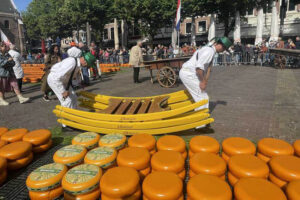


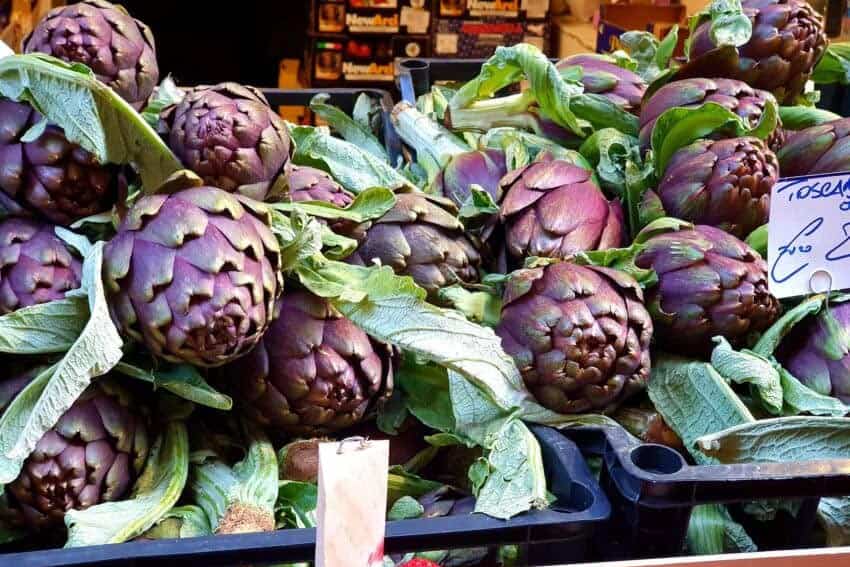
Does this guy know The Azure Window does not exist anymore?
Thank you, we have amended that photo to reflect the fact that the Azure Window has fallen.